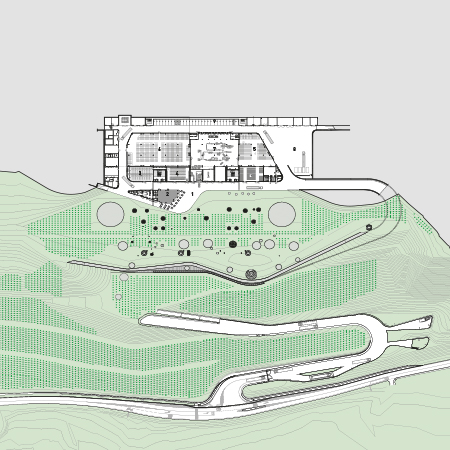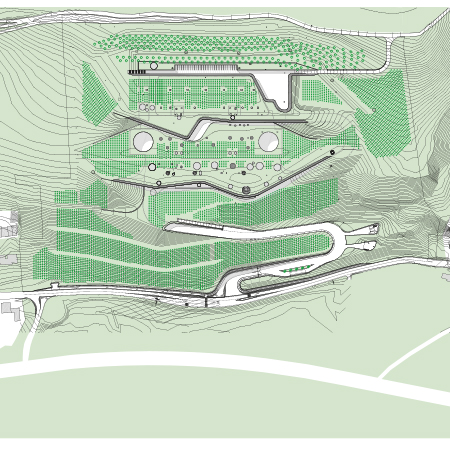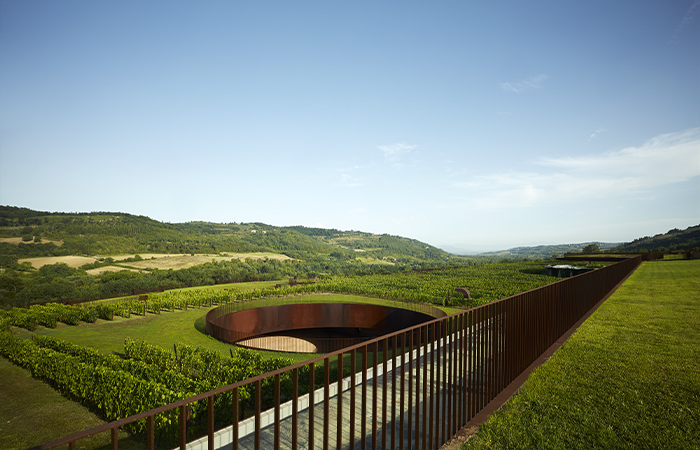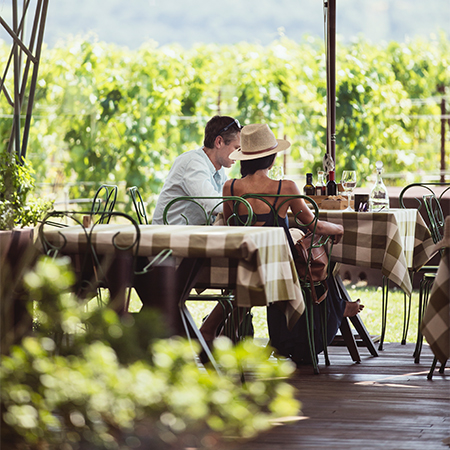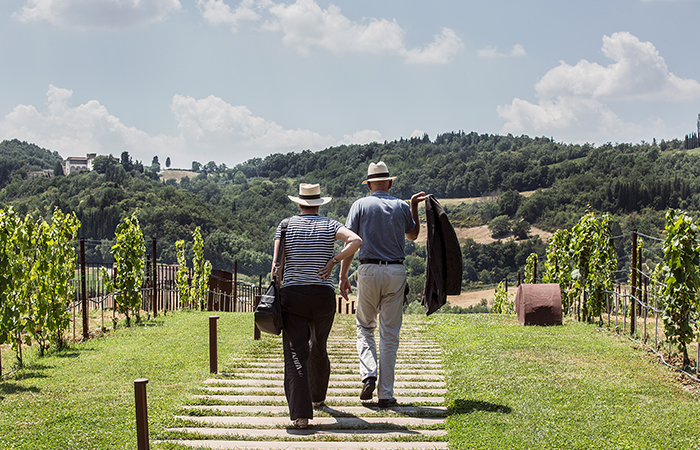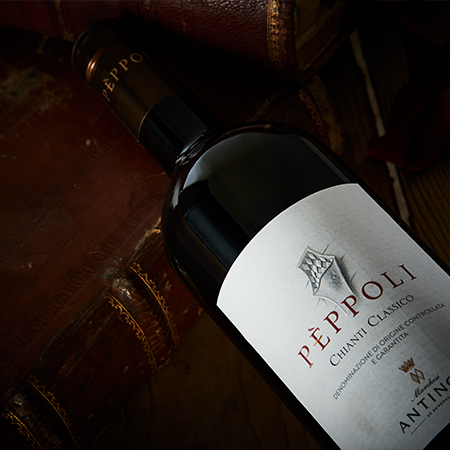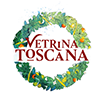A story that began in 1385. A historical link with the Chianti Classico region. A winery where tradition and innovation coexist in perfect harmony. A winery that reveals the past, present and future of the Antinori family.
Perfectly integrated into the surrounding hillside, the Antinori nel Chianti Classico winery was designed to unify state-of-the-art production facilities and fascinating aesthetics through a contemplative relationship with the natural beauty of the surrounding landscape. An ideal fusion of architecture and nature focused on environmental sustainability: the vineyard-covered winery is nestled among olive groves and oak forests echoing its low environmental impact and high energy efficiency. Antinori nel Chianti Classico represents the historic connection that ties the Antinori family to this ancient wine producing territory, Chianti Classico.
The winery is the result of seven years of construction, designed by Marco Casamonti, founding partner of Archea Associati and engineering firm Hydea, based on the Antinori family’s specifications. The winery’s design, from its reddish-brown earth tones, to the continuity of natural building materials of terracotta, wood and Cor-Ten steel is based on the Antinori family’s profound connection to the land and their respect for the beauty of these territories that have been home to their vineyards for generations. Essential geometric forms and warm colors evoke earthy hues of the soil and merge perfectly into the surrounding landscape.

Project
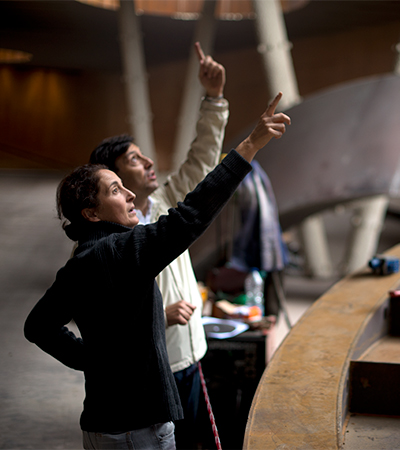
The site is surrounded by the unique hills of Chianti Classico, covered with vineyards, half-way between Florence and Siena. A cultured and illuminated customer has made it possible to pursue, through architecture, the enhancement of the landscape and the surroundings as expression of the cultural and social valence of the place where wine is produced.
The functional aspects have therefore become an essential part of a design itinerary which centres on the geo-morphological experimentation of a building understood as the most authentic expression of a desired symbiosis and merger between anthropic culture, the work of man, his work environment and the natural environment.
The physical and intellectual construction of the winery pivots on the profound and deep-rooted ties with the land, a relationship which is so intense as to make the architectural image conceal itself and blend into it. The purpose of the project has therefore been to merge the building and the rural landscape; the structure appears to be a part of the latter thanks to the roof, which has been turned into a plot of farmland cultivated with vines, interrupted, along the contour lines, by two horizontal cuts which let light into the interior and provide those inside the building with a view of the landscape through the imaginary construction of a diorama. The façade, to use an expression typical of buildings, therefore extends horizontally along the natural slope, paced by the rows of vines which, along with the earth, form its “roof cover”. The openings or cuts discreetly reveal the underground interior: the office areas and the spaces open to the public, organized like a belvedere above the aging cellar and the areas where the wine is produced are arranged along the lower, while the grape reception and storage areas along the upper. The secluded heart of the winery, where the wine matures in barrels, conveys, with its darkness and the rhythmic sequence of the terracotta vaults, the sacral dimension of a space which is hidden, not because of any desire to keep it out of sight but to guarantee the ideal thermo-hygrometric conditions for the slow maturing of the wine. A reading of the architectural section of the building reveals that the altimetrical arrangement follows both the production process of the grapes which descend (as if by gravity) – from the point of arrival, to the fermentation tanks to the underground barrel vault – and that of the visitors who on the contrary ascend from the parking area to the winery and the vineyards, through the production and display areas with the auditorium, the museum area, the wine tasting areas and the shop, to finally reach the floor hosting the restaurant, the olive oil and the vinsanto rooms. The offices are paced by a sequence of internal court illuminated by circular holes scattered across the vineyard-roof. The materials and technologies evoke the local tradition with simplicity, coherently expressing the theme of studied naturalness, both in the use of terracotta and in the advisability of using the energy produced naturally by the earth to cool and insulate the winery, creating the ideal climatic conditions for the production and aging of wine.
Hospitality
An emotional, enological, architectural and artistic journey through 26 generations of the Antinori family sharing their profound passion for wine.
An itinerary from the grape to the glass throughout the winery’s innovative architecture while experiencing the Antinori family’s history and their production philosophy centered on passion, patience and continual research for the finest quality.
Visitors can choose between three different type of tours or, in alternative, request a taylor-made experience.
Rinuccio 1180
Located on the roof is the winery’s restaurant Rinuccio 1180, a suggestive structure with wide picture windows that surrounds guests with breath-taking views of the soft rolling Tuscan hillside scattered with olive groves and historic churches. The restaurant was named in honor of the forefather of the Antinori family, Rinuccio degli Antinori. Completely surrounded by Chianti Classico’s extraordinary landscape, Rinuccio 1180 connects our senses of sight and taste with the products unique to this territory. Its comfortable and informal atmosphere is reflected on the menu, inspired by tradition. Menu selections are contemporary interpretations of Chianti’s best cuisine accompanied by a wide selection of Antinori estate wines. Simple, seasonal preparations with authentic flavors are prepared with locally sourced ingredients.
Wine Shop
The Wine Shop offers a wide selection of wines produced on the Antinori family estates, both in Italy and abroad. In addition, wine tasting by the glass is available. It is possible to find exclusive products from the family’s Tuscan estates as well as artisanal products and other locally sourced gourmet delicacies.
Wines
Pèppoli – Chianti Classico DOCG
The Pèppoli vineyards produce this Chianti Classico, a blend of Sangiovese grapes and complementary varieties; Pèppoli is recognized and appreciated for the full expression of its fruit. A wine that represents the Chianti Classico territory and its historic grape variety with typical floral and fruity aromas.
Villa Antinori – Chianti Classico DOCG Riserva
Villa Antinori Chianti Classico Riserva is a blend of Sangiovese together with other complementary varieties produced as a tribute to Antinori’s historic label that has accompanied the family’s long-standing winemaking traditions. The inauguration of the Antinori nel Chianti Classico winery inspired the family to reinterpret this Tuscan classic, of unmistakable style and quality, into a premium quality Riserva that is delicate, decisive and elegant.
La Vigna sul Tetto – Chianti Classico DOCG Riserva
La Vigna sul Tetto is crafted exclusively from grapes grown in the vineyards on the rooftop of the Antinori nel Chianti Classico winery. The idea of producing a Chianti Classico Riserva from the rooftop vineyards was a fascinating challenge. La Vigna sul Tetto, made predominantly with Sangiovese and blended with complementary varieties, is only produced in limited quantities.
Vinsanto Marchese Antinori – Vinsanto del Chianti Classico DOC
Vinsanto production in Tuscany and in the Chianti Classico region dates back to the Middle Ages. Observing traditional methods and strict production regulations, Vinsanto Marchese Antinori is produced from selected Trebbiano and Malvasia grapes that are left to dry in a completely natural process requiring time and patience. The resulting wine is intense and pleasing for its rich aromas and soft palate.



